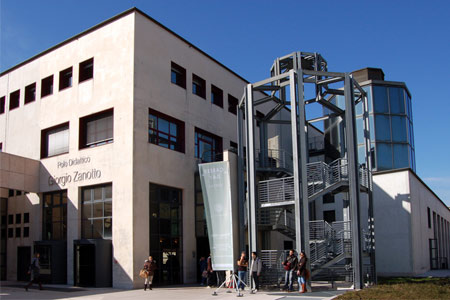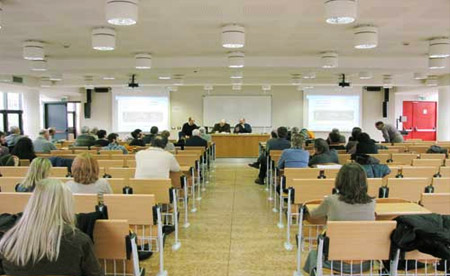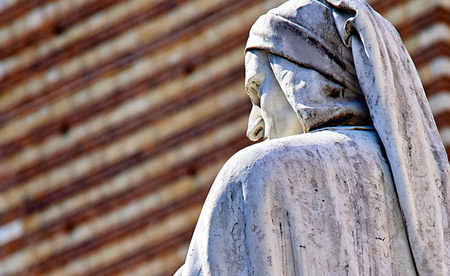Learning outcomes
The course aims at providing the students with in-depth knowledge and tools for the analysis of drawing techniques and functions, between 15th and 18th century. The student has to be able to analyse a drawing, identifying its correct historical, cultural and geographical context, and identifying the various historical techniques used by the artist in the foremost artistic production centres in Europe. Also, the student will have acquired knowledge of the foremost collections of drawings and drawing cabinets in the Western world. The course will be given in english.
I - Prof. Giorgio Fossaluzza
The course is connected to the course held by prof. Enrico Dal Pozzolo in the second semester and it aims to provide students with the basic knowledge for the analysis, stylistic recognition and cataloging of drawings, engravings (technique: woodcut, chalcography) and other forms of art printing (lithography and screen printing).
Two visits are planned as an integral part of the course at the Drawings and Prints Cabinet of the Galleries of the Academy of Venice and the Drawings Cabinet of the Castelvecchio Museum in Verona.
Knowledges to acquire. 1. Initiating the student to the recognition and analysis of materials (supports) and techniques, tools and forms, with particular regard to the functions and types.
2. Providing examples in order to acquire reading methods: examples of preparatory drawings, first ideas, sketches will be analyzed; as well as the types of functional designs, contract designs, decorative designs, independent designs.
3. Addressing the study of the drawings used in the art and science of engraving, with particular regard to the transfer method and techniques of woodcut, direct and indirect intaglio, lithography and screen printing.
4. Tracing the historical features of the history of drawing.
5. Placing the value of the design in the frame of European collecting.
6. Outlining the profiles of the great connoisseurs and the examples of classification and cataloging, with particular regard to the basic repertoires.
7. Illustrating the types of cataloging forms.
Skills to acquire. 8. The student will be able to recognize the quality, the technique, the period of realization of a drawing through its own graphic characteristics
9. The great artists are integrated with the knowledge and mastery of their design corpus, to be added to the best-known works
10. Specifications are provided for the preparation of a critical fact sheet relating to a design, analyzed in its particular aspects: quality, ductus, support, chronology, type of use, conservative history
11. The student is encouraged in the autonomy of judgment exercised on another type of work of art in its own characteristics
12. The philological survey perspective of artistic personalities is also expanded in their drawing and not just pictorial production
13. The possibility of integrating the history of European art in its "preparatory" aspects, trend indices, circulation of graphic models and contamination of different styles typical of other artistic areas (Italian, French, German, Flemish) is given
Contents. The course will deal with the history of drawing, Italian and European, highlighting the major development moments, the major artistic personalities and the uses they have made of drawing (preparatory, sketches, functional drawing, workshop repertoire), the evolution of the techniques of engraving and their diffusion, the great protagonists of the art of engraving and the typologies of design. Alongside this historical perspective, the various types of supports, graphic tools and the methods of creating a wood and intaglio engraving will be exposed.
Lectures. Lessons with image projection (made available to students).
__________________
II - Prof. Enrico Dal Pozzolo
The course aims to improve the knowledge of Modern Art History, highlighting the different approaches to the reading of the art works: from archival research to contextual frameworks, from the use of images as historical sources to interactions with literature and other forms of art, from the connoisseurship to fakes and forgeries, from the art market to the phenomena of the exhibitions.
KNOWLEDGE:
the course is linked to the introductory one carried out by prof. Giorgio Fossaluzza in the first half of the year and aims to refine the reading tools of 16th century drawings, through the analysis of those attributed to Tiziano Vecellio.
Purpose of acquiring specific knowledge:
1. addresses, through a specific focus, one of the most characteristic aspects of the production of one of the protagonists in the history of modern Italian art;
2. it is explained through which paths of historiography it is now possible to study this issue in depth;
3. the importance of the studies and exhibitions that have addressed this productive dimension of this artist is highlighted;
Purpose of the acquisition of specific skills:
4. you will learn to know how to 'read' a drawing by this artist professionally;
5. its main drawings are memorized and analyzed;
6. one learns to draw up a professional profile relating to one of his main portraits;
7 improves one's personal research skills.
Course Content: the course will deal with the theme of Titian's drawings, considering the following reading perspectives: attributions, dating, analysis of conservation, copies and fakes. The lessons will also have a seminar character, with questions and classroom discussions..
Teaching methods: Lessons with power point.
I - Exam: written. To complete the test, students are asked to produce a profile of a specific drawing, previously agreed with the teacher.
II - Examination: oral. It is recommended to read the texts in the program and to study the contents and all the images shown, for which you will be asked: author, subject, technique, location, date and possibly other critica spects. It is required the preparation of a professional entry relating to a drawing of the artist.







